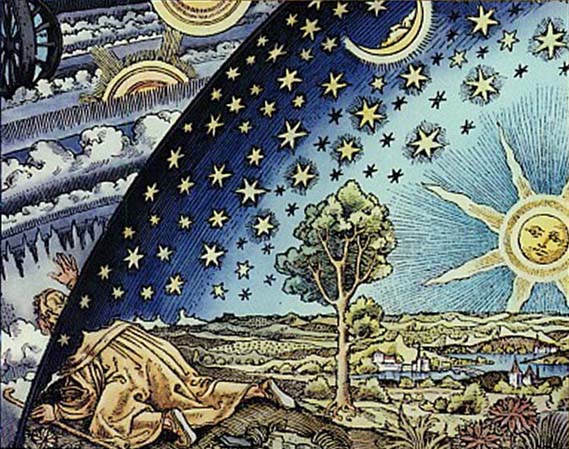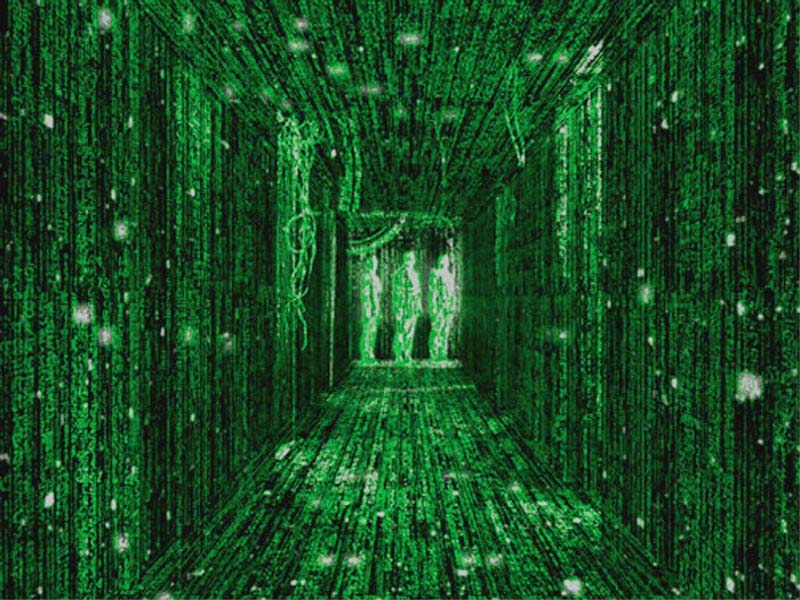The Reality of Overunity Generators: Evidence for an Open-System Universe
Nonconservative Energy Generation Processes
Let us now consider nonconservative energy producing technologies of which there are a large variety in existence. These violate the first law of thermodynamics and often Newton's third law. These over-unity or "free energy" technologies have the potential to yield very inexpensive power, new modes of transportation and to greatly benefit society. However, because their explanation lies outside the domain of standard physics theory, they are opposed by standard physicists and suppressed by governments. The question that the standard physicist most often asks is where does the excess energy come from that these technologies generate?
The reason that physicists are in this dilemma is because they view the physical universe as a closed system, one that emerged into existence through a highly improbable freak event and that inevitably proceeds towards a heat death in the distant future. They have extended the laws of heat engine thermodynamics to apply to phenomena in the universe as a whole, presupposing that the physical universe constitutes the totality of existence and that it is closed, i.e., has no "outside environment".
But there is a new approach to understanding the physical universe that is being developed. This instead views the universe as an open system and allows for the spontaneous generation of energy with no need of an antecedent high potential physical source. This is the methodology of subquantum kinetics. As mentioned elsewhere, subquantum kinetics has surpassed the prediction track record of general relativity and quantum mechanics in that it has upwards of 12 a priori predictions that were subsequently verified. Moreover it constitutes a unified field theory, explaining the origin of electric charge, gravity, their force interactions, the origin of the nuclear force, spin, magnetism, beta decay, and a host of other phenomena in a unified theoretical framework.
In subquantum kinetics the physical universe is viewed as a pattern epiphenomenon of an inherently unobservable ether composed of etheron units that engage in reaction and diffusion processes throughout space and which proceed as well along a higher dimensional etheric continuum that extends beyond the physical, "above" and "below" our universe. To those familiar with eastern metaphysics, the relation of the physical universe to the higher dimensional etheric realm is the same as that of maya to the greater Maya. Hence the universe is like a water mark on a piece of stationary paper. To us, the watermark is physically real and that seems to us as the totality, but in reality it is the paper that is the true reality, yet it is invisible to us. We become aware that the paper is actually present by conducting laboratory experiments such as those that refute the special theory of relativity (see chapter 1 of Subquantum Kinetics for a list).
Let us put an imaginary boundary around the unobservable etheron states X, Y, and G that are proposed to compose the observable physical universe which itself consists of all existing fields, particles and photons, and call this system U. Then subquantum kinetics holds that there is an etheric environment or outside to system U which is inherently active and maintains all matter, energy, and fields through its ever-present activity. In fact, it views all matter, energy, and fields as mere inhomogeneities (waves or gradients) in this ether that would immediately vanish were the ether's ongoing activity ever to cease. A universe in which matter can materialize and dematerialize, where photons can spontaneously gain energy or loose energy? To the conventional physicist this sounds like magic! But what's wrong with conceiving the universe as being a bit magical? Many find this preferable to the positivistic, closed-system, clock-work-like model that physicists have constructed and whose ultimate fate is the thermodynamic heat death. By shifting to this open system perspective, stories of holy icons or statues weeping tears of fragrant nectar, of magicians levitating themselves in the air, of mystics materializing vibhuti (sacred ash) in the air now become plausible and fill us with wonder.
Video of David Blaine levitating
It is known that the first law of thermodynamics, that entropy should spontaneously increase, is only valid for a closed system. Open systems, systems that exchange matter and energy with their environment, can instead spontaneously decrease their entropy, increase their state of order. The mathematics setting this forth was deduced by mathematician Ilya Prigogine, an achievement for which he was given the Nobel Prize. The energy content of open systems can progressively increase provided that they import high energy potential fuels or food and export low energy potential products, or waste. One example of such an order increasing system is a living organism. Another example is an etheric reaction-diffusion system, such as Model G of subquantum kinetics. In this case, it is not matter and energy, but etherons that enter and leave the domain of our physical universe, transforming into the G, X, or Y ether states that form the substrate of our universe, or transforming out of these states to other "outside universe states", this entire river of activity taking place along a higher dimension that remains inherently inaccessible to us and our measuring instruments. Yet we know it is there because by postulating it along with Model G, we are able to account for observable physical phenomena in a unified manner unequaled by any attempts previously made with the standard physics approach, string theory included.
To be able to properly understand the origin of free energy, one must first accept the reality of the inherently unobservable transmuting ether and its higher dimensional extent. One must also come to realize that the physical world, while seeming real and substantial to us, is actually far from being real and substantial. As mentioned above, it is merely a watermark, wave epiphenomena of the underlying ether. Whereas standard physics is based on the positivist notion that only observable entities are real, one must completely reject this view and adopt the perspective that observable entities are actually what is figmentary and that it is the hyperdimensional ether that is the real existent. Like Neo in the movie Matrix realizing that the physical world he was familiar with is actually just a computer generated illusion, "the matrix", and that the real world lay beyond, but hidden from direct view, we too must make a similar shift of perspective. Although in our case, reports from those that have "seen" indicate that this beyond is not a dark place, but one that is very beautiful and sacred.
Like Plato's analogy which compares us to prisoners in a cave watching shadows projected on the wall which we take to be real events in our physical lives, we must follow the brave who realize they are really in a cave and who turn around and see that the real world lies beyond the opening of the cave. Like the medieval explorer, we must peer beyond the outer boundary of the crystalline sphere, the positivist world view that modern science has woven for us, and realize that another reality exists beyond our physical grasp.

Renaissance-era woodcut portraying an adventurer breaking through to become aware of a new
concept of the universe that breaks through the conceptual boundaries of the crystalline sphere.
Once we have made this shift of perspective from "universe" to "meta-universe", the origin of free energy becomes far easier to comprehend. The open system view of the universe adopted in subquantum kinetics, leads to a new understanding for the origin of the physical universe. The universe now does not come into being by some inexplicable and highly improbable explosive event in the distant past, but comes into being gradually through a process of continuous creation. The new physics allows for material particles to continuously materialize throughout the universe. This negentropic process called parthenogenesis, where a sufficiently large zero point electric potential fluctuation arising spontaneously in space, grows in size and ultimately matures into a subatomic particle is an example of a direct violation of the First and Second Laws. Yet this emergence process may be easily observed and understood by computer modeling the Model G ether reaction system (see posted simulation). The soliton particle so produced has structural characteristics that match those found for the nucleon in particle scattering experiments. Subquantum kinetics has coined the term genic energy to refer to the newly born energy quantum that a subatomic particle embodies. This signifies energy that is spontaneously generated, nonconservatively created.
This new physics paradigm also leads to the realization that within the supercritical regions of space where galaxies spawn themselves, photons as a rule spontaneously gain energy and continually blueshift their wavelength. This phenomenon accurately accounts for the Pioneer effect, a photon blueshifting effect; it accounts for 72% of the earth's geothermal energy; and it accounts for the energy output of jovian planets, brown dwarfs, and red dwarf stars, all of which lie on the same mass-luminosity relation. It also explains the enormous energy output from novae, supernova explosions, and galactic core explosions. Even upper main sequence stars that are run primarily on fusion energy, bring into being more matter through nonconservative parthenogenesis than they burn through energy conserving fusion reactions. So even for such stars, it can be said that genic energy reigns supreme. By the way, when the astrophysics Nobel Laureate Hans Bethe reviewed the photon blueshifting idea predicted by subquantum kinetics, his comment was that it was a very original idea and that there might be some truth to it.
So in overview, we find that, as a rule, most energy in the universe is being generated through nonconservative energy generation processes. Free energy is not the exception, but the rule! Only in intergalactic space, where the ether reactions are predicted to be subcritical, is energy spontaneously lost from the universe, again this is a nonconservative process, but one causing energy loss rather than energy gain. This "tired-light" phenomenon accounts for why photons traveling through intergalactic space tend to lose energy and redshift, producing the observed cosmological redshift.
Inventors of overunity energy devices, it seems, have learned a way to generate genic energy, what Nature does all the time, but at a far faster rate. The rate of genic energy generation production in photons traveling in the Earth's vicinity is so slow that one must allow a test signal to travel many astronomical units of distance before a frequency shift large enough can be detected. Inventors, on the other hand, by astutely observing nature and following their intuition have succeeded in far surpassing Nature in terms of the rate of genic energy generation. Like Nature, the excess energy may ultimately be traced to the Prime Mover that animates the universe and gives us the sense of the flow of time, the vast reservoir of ever-present transmutive etheric activity that fills all space. Thus overunity devices require no fuel, no pre-existing energic physical structure to break down or oxidize to produce their energy. Their energy is nascent, genic energy.
Even conservative energy generation processes, such as solar, fossil fuel, or nuclear energy generation, may be considered ultimately to be forms of genic energy generation. For if one traces how that light, coal, wood, or uranium came into being, one ultimately realizes that the matter burning in the Sun, or built up in the core of a blue giant star or in supernova explosion ultimately came about through natural processes which are predominantly of a nonconservative genic-energy-generation nature.
The finding that overunity devices violate the first law of thermodynamics is no longer inexplicable in the open system universe perspective. The conventional physicist, operating in his closed system universe view, would object to those adopting the open system perspective. They might feel that to do so is not fair, that to do so one is attempting to avoid the first law of thermodyanamics by changing the rules of the game, that adopting the open system universe view is too easy a way to escape their objection. But who said that things have to be complicated.
Model G of subquantum kinetics postulates just five ether reaction-diffusion kinetic equations (which are expressed as three partial differential equations) and from this derives far more than most physics theories put together. This reactive ether approach was not originally developed as a way of explaining where overunity devices get their excess energy. It was developed because the soliton-like wave structures it gives birth to have properties very similar to subatomic particles. Its ability to serve as a framework for understanding over-unity devices emerges as a bonus. Another advantage is that it offers a reasonable and cogent explanation of how all matter and energy filling the universe initially came into being.
.
Next Page: Some Examples of Free Energy Technologies



